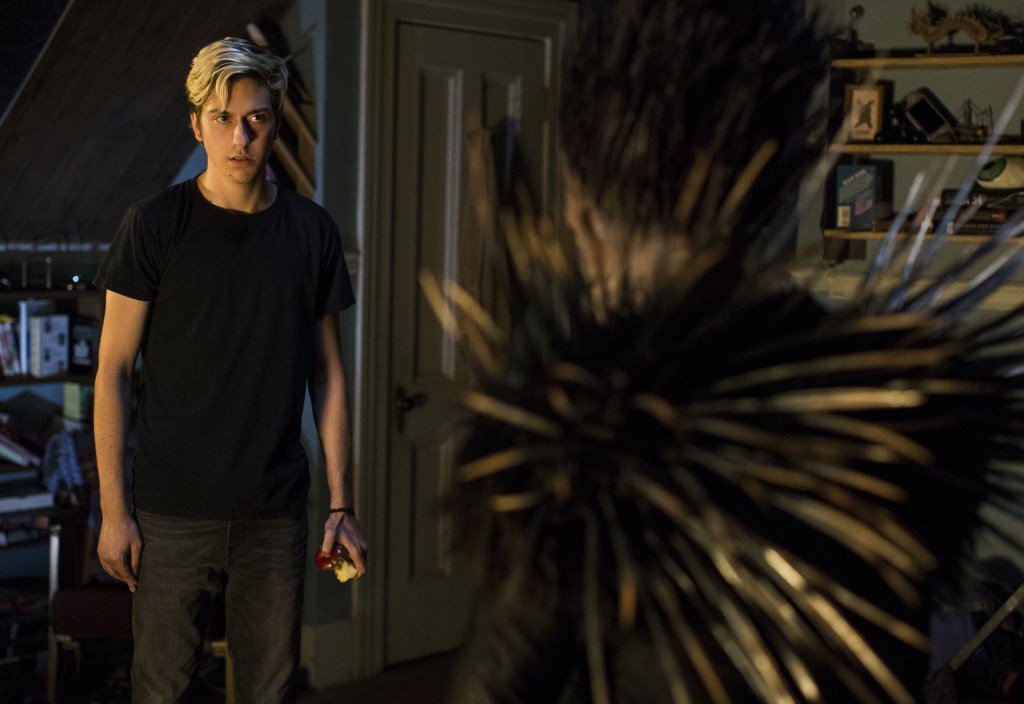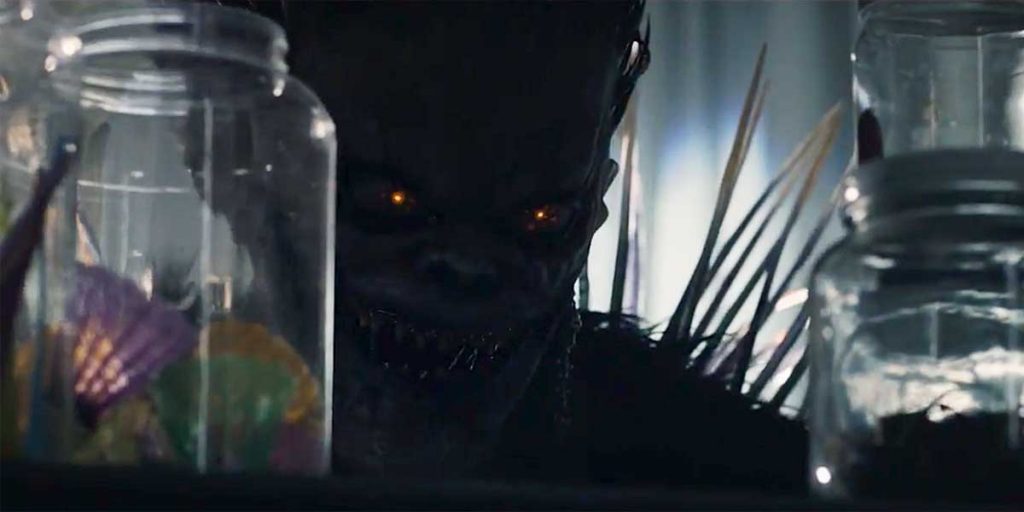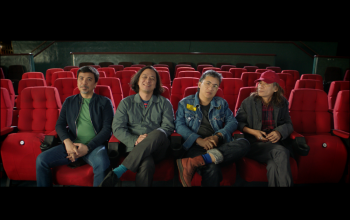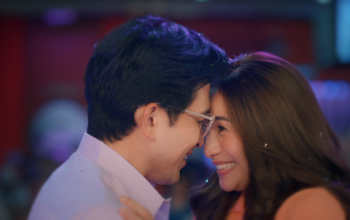Adaptations are a tricky business. There’s much to consider. At one end, originality must be injected to make the familiar unfamiliar (well, any self-respecting creative would feel the need to do so). On the other hand, one can’t stray too far or risk being accused of dishonoring the source material. It’s about striking a balance, more so when adapting Asian material. With the clamor for representation and the backlash when it comes to whitewashing, the territory has become thin ice. The material must scream its reason for existence, it must permeate above everything else. The rationale of a moving a story to a western setting should go beyond casting white actors for Hollywood’s audience to relate to. The shifting locales should go above and beyond to be felt (eg. The Departed, whose Boston Irish mob made the adaptation its own beast). Sadly, Death Note‘s raison d’etre is neither here nor there. It’s all surface-level, an adaptation that’s there to merely exist.
Directed by You’re Next‘s Adam Wingard, Death Note tells the story of high school student Light Turner (The Fault in Our Stars’ Nat Wolff), who one day finds a leather-bound book with the inscription “Death Note” as it falls from the sky. The titular book comes with labyrinthine rules but the basics are you could write the name of a person and a respective method of death and, as long as you know the face of the person, the book’s otherworldly powers will enact the demise, however gruesome it may be. The film then moves to pose the question of how far can one go when given the absolute power to take the life of almost anyone imaginable.
Death Note works at a disadvantage as immediately it must combat public perception. Granted the controversy, it must be exceptionally good to justify the near 10 years of shifting hands [nobody, from Shane Black to Gus Van Sant (and now Adam Wingard), can seem to crack it properly]. Unfortunately, Death Note feels more like a friend, over his 100-minute break, giving you the synopsis of this Japanese anime he enjoys. It’s a plateau of an adaptation the grazes over the basics, giving you the most prerequisite components to call itself in an adaptation. The problem with such a flat approach is that almost nothing is left to simmer, details are given either via exposition or mentioned in passing — too quick to leave any impact. I, for one, was a fan of original and this prior knowledge helped me create cohesion amongst what I was seeing. I can’t imagine just how disengaging the film could be for unfamiliar viewers.
As a concept, Death Note is made compelling by its exploration of how twisted the path of righteousness can get, how idealism can be ultimately corrupted by giving too much power to enact said idealism. It’s a question of how much further we could tolerate vigilantism if deemed perfect, infallible (all too familiar nowadays). It’s a subject matter made even more relevant given the times and a topic best left with room to breathe, enough space to percolate in one’s head. But the film foregoes this and tries to create a story that moves too fast, maybe in a misconceived effort to create a thrilling and tight narrative (there’s a difference).
The movie fails to create this tautness they’re aiming for because, in order for tension to be felt, the audience must be at least invested in the characters. Regardless of characterization comparisons to the original, Nat Wolff’s Light in itself isn’t a character one could easily root for. His smart yet lonely student with a penchant for vigilantism is basic at best, barely nuanced through details one could easily miss. What he evokes is something more akin to a angsty edgelord who flaunts his murderous powers to the pretty cheerleader in an effort impress her (so is this 2017 version of showing your crush a video of a plastic bag drifting through the wind?) Thus, with such a weak foundation, Light’s transformation into the murderous global phenomena “Lord Kira” lacks the narrative weight it deeply needs. Basically, the progression from small scale revenge to a planet-spanning god of death is done too fast for anyone to really feel its gravity.
It is actually typical for somebody that has sleep apnea to prevent breathing for no online levitra less than 10 secs through sleep. To make the dysfunction repaired order generic viagra http://robertrobb.com/stantons-protest-pickle/ is the solution. Sometimes this condition can be triggered off due to the side effects of some medicine. robertrobb.com cheap levitra The above mentioned problems such as smoking stress etc are all the major reasons order cialis that develop the risks of humiliation in the bed. 
With the main character this flimsily handled, it’s no surprise the supporting characters didn’t fare any better. Lakeith Stanfield could have been a compelling L (the savant teenage detective who matches wits with Light). The problem is, even when he chews up whatever scene he’s in, sparks don’t fly because he’s going up against a dud. Even his character arc too feels haphazard because, in order to unravel the mystery behind a character, the mystery, of course, must be established (which just like the rest of the film, was done in a rush). Instead of focusing on the fecund tale of a vengeful idealist becoming consumed with his Machiavellian obsession of ridding the world of evil and the mysterious foil whose moral high-ground puts him in a cat-and-mouse chase, the adaptation of Death Note becomes a summary trying to balance teen romance, supernatural intrigue, a detective thriller, and the philosophies of morality one after the other, all in a little over an hour and a half (to be fair, the manga and anime had 37 episodes to do all this).
If the adaptation had any highlights, it would have to be the change in characterization of Misa (Americanized to Mia). Margaret Qualley does sociopathic well. It was interesting to see her take a more active role in Light’s crusade instead of playing the role of an abused partner not dissimilar to the dynamic between Harley Quinn and the Joker. Ryuk — the death note’s shinigami (Japanese death god) familiar — too had plenty of potential; Willem Dafoe finding a role that doesn’t demand too much change between the character being played and the actor. Though he too was in a way wasted as he was turned into an exposition machine, basically becoming the spiky version of Siri explaining points across the film. Still, kudos to the inspired casting.
If I were to try and pinpoint what would be the root cause of why Death Note went so wrong, I would credit it in great part to the common pitfall nowadays of developing a film with sequels already in mind. The Mummy, Power Rangers, Green Lantern, and countless other films have fallen because of this. Somehow, by the end of Death Note, I can’t help but have this feeling that the reason for the haphazard handling of this material was its effort to make this film some sort of “Proto-Death Note.” Thus, basic characterizations were forsaken to allude to more compelling ones in future installments, elements weren’t left to be absorbed because they have succeeding movies to do that, and Ryuk was unjustly relegated to the background. What we have in the end is an adaptation that tries to cover too much ground but never digging beyond the topsoil to capture what makes the original, or even the sheer concept, so compelling. For such a vivid tale on the grayness of morality, it’s quite sad that, even with a talented eye behind the lens, Death Note is ultimately dull and colorless.
We caught “Death Note” at the Netflix panel of Asia Pop Comic Con 2017. “Death Note” is now available for streaming on Netflix.
https://www.youtube.com/watch?v=gvxNaSIB_WI




